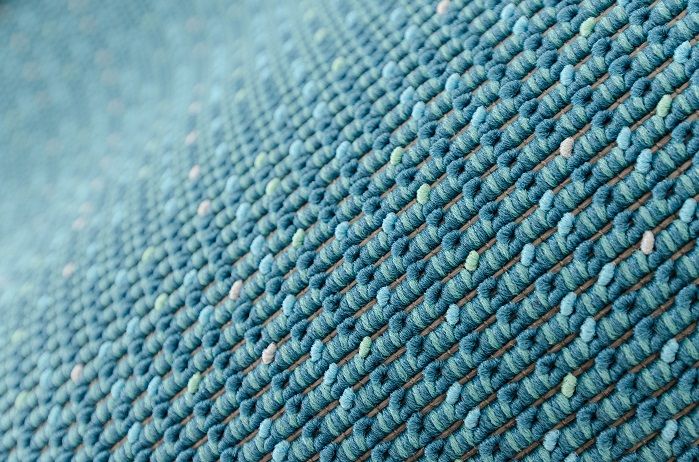Nylon, a widely used synthetic fabric, is a staple in the fashion, automotive, and industrial sectors due to its durability, elasticity, and versatility. However, with growing concerns about sustainability, many are questioning whether nylon aligns with environmentally conscious living. So, is nylon sustainable? Let’s delve into its production process, environmental impact, and the strides being made toward more sustainable solutions.
The Production of Nylon
Nylon is a synthetic polymer made through a chemical process involving petroleum, a non-renewable resource. Its production requires significant energy and emits greenhouse gases, notably nitrous oxide, which is 300 times more potent than carbon dioxide in contributing to climate change.
Moreover, the manufacturing process generates waste and consumes vast amounts of water. The reliance on finite fossil fuels and the energy-intensive nature of nylon production are major factors that challenge its sustainability.
Environmental Impact of Nylon
- Non-Biodegradability
Nylon is not biodegradable, meaning it can persist in the environment for hundreds of years. Discarded nylon products contribute to landfill waste and, when incinerated, release toxic fumes into the atmosphere. - Microplastic Pollution
Nylon fabrics shed microfibers during washing, which enter waterways and contribute to microplastic pollution. These tiny particles harm aquatic ecosystems and can enter the food chain, posing risks to wildlife and humans. - Water and Energy Usage
The production of nylon is water-intensive, and the dyeing process often releases harmful chemicals into water systems. The high energy consumption further exacerbates its environmental footprint.
Is There a Sustainable Side to Nylon?
While traditional nylon production has significant environmental drawbacks, advancements in technology are paving the way for more sustainable alternatives.
- Recycled Nylon
Recycled nylon, made from post-consumer materials like fishing nets, carpet fluff, and industrial waste, significantly reduces the reliance on virgin petroleum. By repurposing waste, recycled nylon cuts down energy consumption and greenhouse gas emissions.Popular brands like ECONYL® are leading the charge in recycled nylon innovation, proving that it’s possible to create durable and versatile materials while minimizing environmental harm.
- Improved Manufacturing Processes
Some companies are exploring methods to reduce the energy and water requirements of nylon production. Cleaner production techniques and closed-loop systems aim to limit pollution and resource use. - Durability and Longevity
Nylon’s strength and resilience mean that products made from it often last longer than those made from other materials. Choosing high-quality nylon products and maintaining them properly can reduce the need for frequent replacements, indirectly contributing to sustainability.
Alternatives to Nylon
For those seeking sustainable options, several alternatives offer eco-friendly qualities:
- Organic Cotton
Organic cotton is biodegradable, renewable, and grown without harmful pesticides, making it a great choice for eco-conscious consumers. - Hemp
Hemp is a fast-growing, durable, and renewable crop that requires minimal water and no synthetic fertilizers. - Lyocell (TENCEL™)
Lyocell, derived from sustainably sourced wood pulp, is biodegradable and produced in a closed-loop system that recycles water and solvents. - Recycled Polyester
Recycled polyester, much like recycled nylon, is a sustainable alternative that transforms waste materials into valuable resources. By repurposing discarded plastics and other synthetic fibers, recycled polyester significantly reduces the reliance on virgin materials, thereby minimizing its environmental footprint. This innovative approach not only decreases plastic waste in landfills and oceans but also conserves energy and reduces greenhouse gas emissions associated with production.
Furthermore, recycled polyester can offer the same durability, strength, and versatility as virgin polyester, making it an ideal choice for a wide range of applications, from clothing and outdoor gear to home textiles. By choosing products made from recycled polyester, consumers contribute to a more circular economy, fostering a fashion industry that prioritizes environmental responsibility. This shift towards sustainability not only benefits our planet but also drives positive change in manufacturing practices, encouraging companies to embrace eco-friendly initiatives and invest in recycling technologies.
Conclusion: Is Nylon Sustainable?
Traditional nylon is far from sustainable due to its reliance on non-renewable resources, energy-intensive production, and environmental persistence. However, innovations in recycled nylon and improvements in manufacturing processes offer hope for a more sustainable future.
For conscious consumers, opting for recycled nylon or exploring alternative materials can help reduce the environmental impact of their choices. Sustainability is about progress, not perfection, and every small step makes a difference in protecting our planet.
So, is nylon sustainable? The answer depends on the type of nylon and how it’s used. While traditional nylon has significant challenges, its recycled versions and extended use in durable products show promise for a more eco-friendly future.













